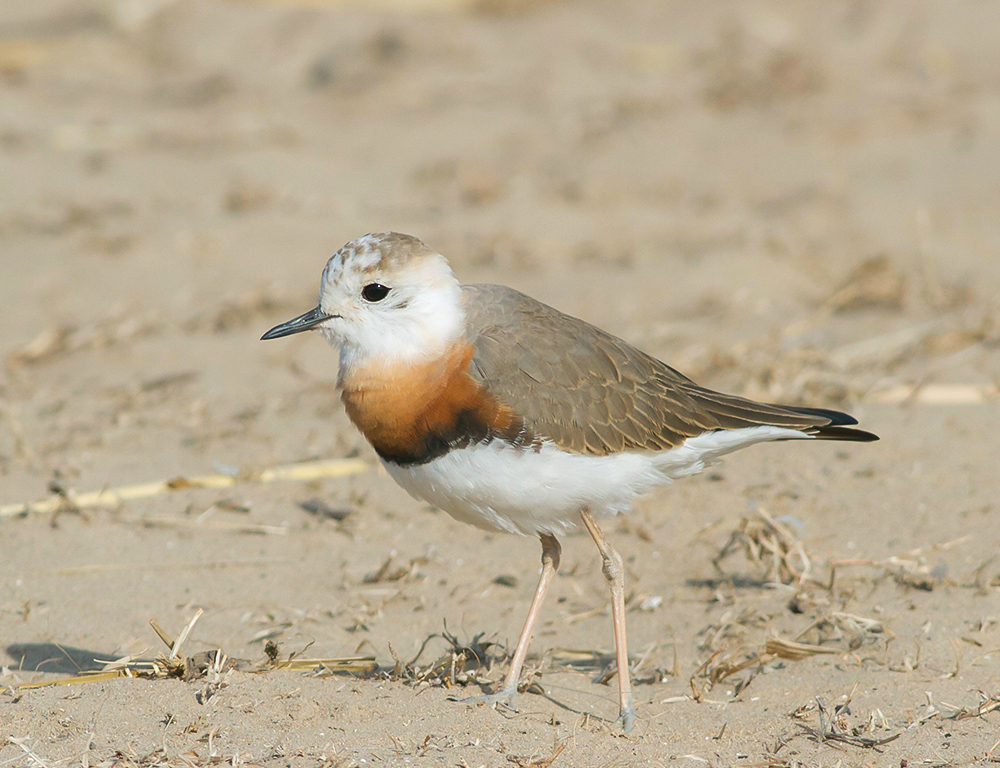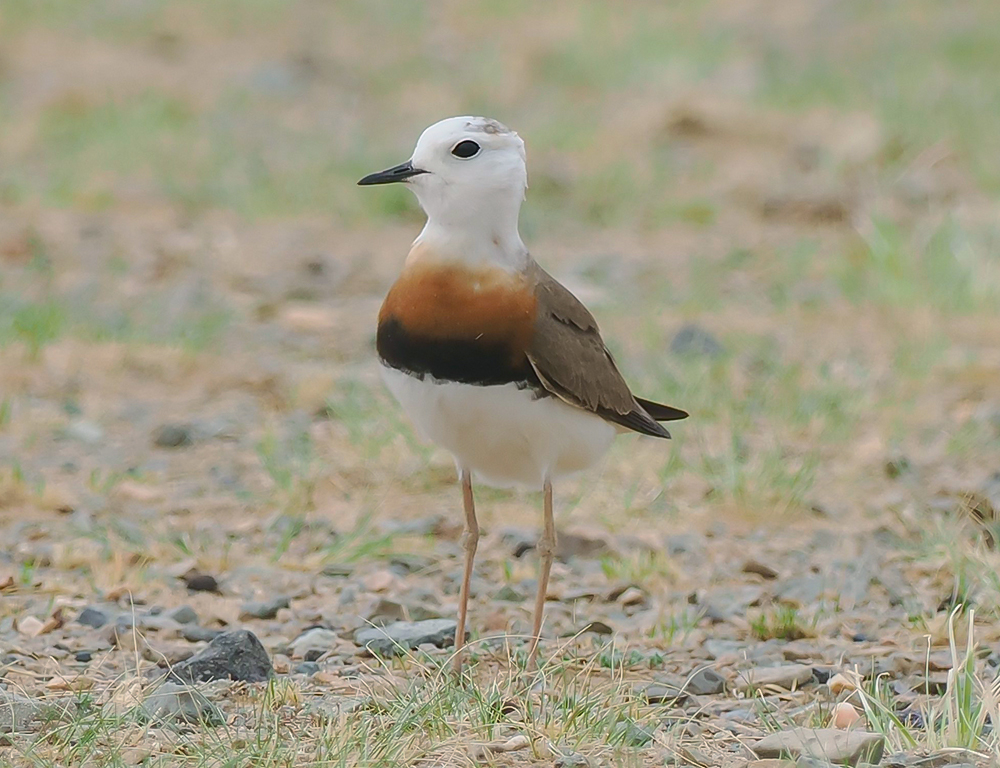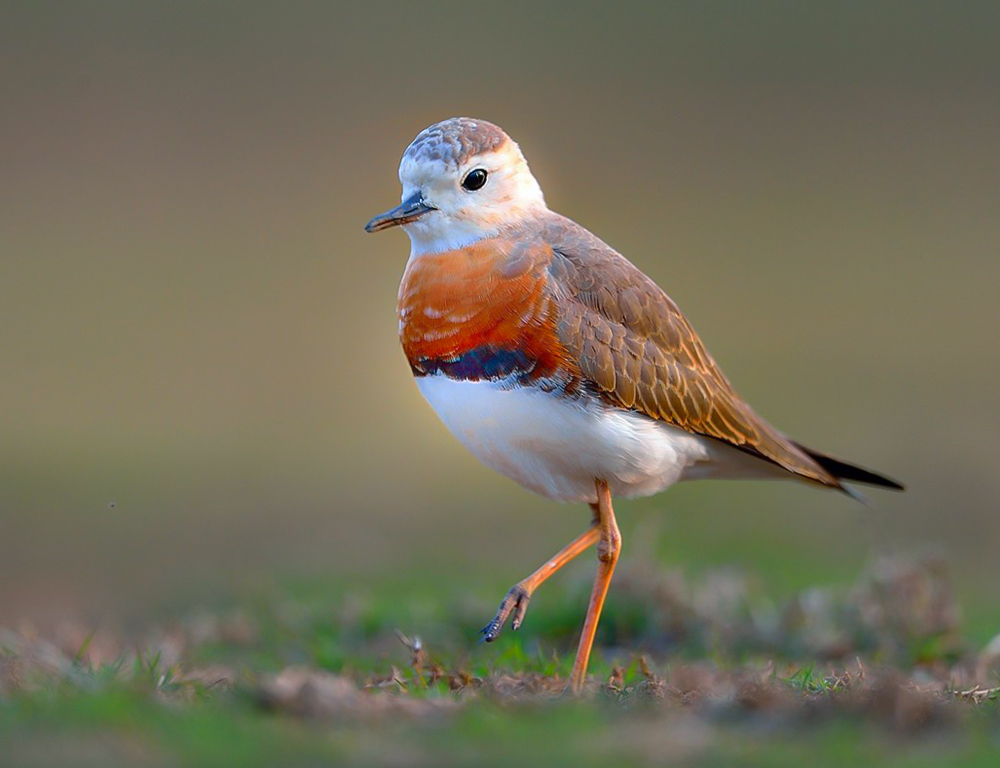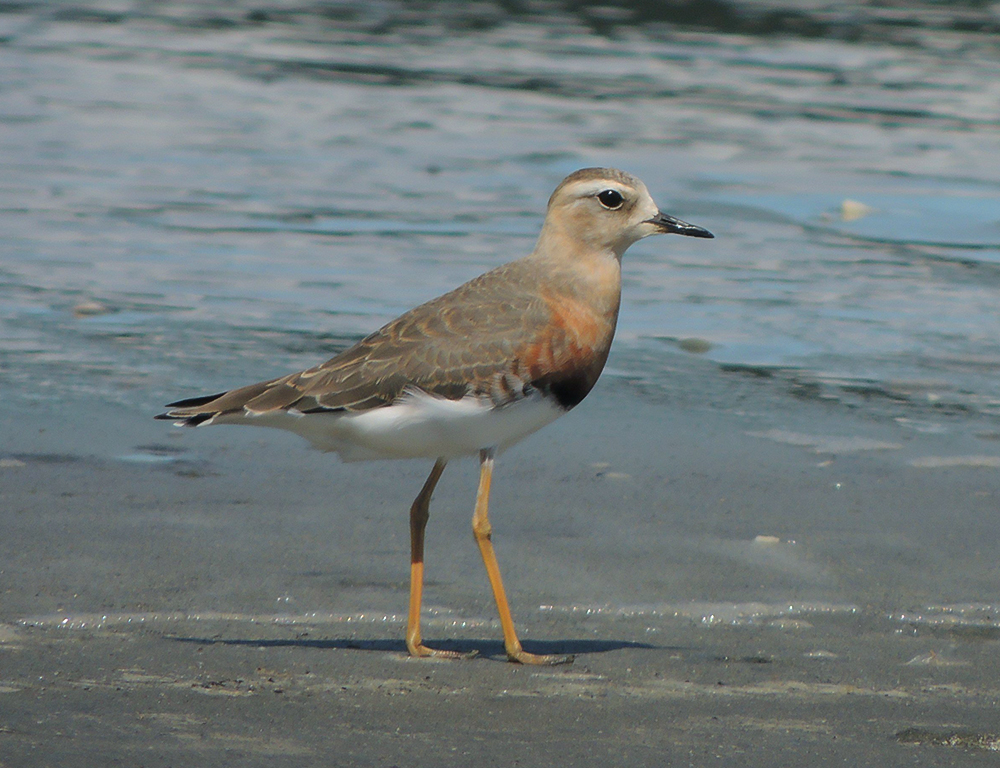Enthralling and enigmatic migratory birds like the Oriental Plover, also known as Charadrius veredus, captivate with their incredible journeys and unique behaviors.
Originating from the grasslands of Mongolia and China, this medium-sized wader embarks on a remarkable migration each year, traversing thousands of miles to reach its wintering grounds in Australia.
What sets the Oriental Plover apart is its endurance and striking appearance, characterized by a sleek plumage that undergoes seasonal and gender variations.
From the vast expanses of Asian grasslands to the serene beaches of Australia, this bird’s complex life cycle and distinctive features make it a subject worthy of admiration and exploration.
Join me as we delve deeper into the fascinating world of the Oriental Plover.
Physical Characteristics of the Oriental Plover

The Oriental Plover (Charadrius veredus) possesses physical characteristics that make it remarkable in the avian world. Here’s a closer look at these fascinating traits:
Size
As a medium-sized wader, Oriental Plovers typically measure around 24 to 27 centimeters in length. While their size is comparable to an average pigeon, their slender build and graceful demeanor give them an air of elegance.
Plumage
One of the most striking features of Oriental Plovers is their seasonal variation in plumage. During the breeding season, males contrast strikingly with a black belly and throat against white underparts.
In contrast, females and non-breeding males sport more subdued colors, with pale brown mixed with grey on their upper parts that fade into white underneath. This variation helps them blend into their surroundings and serves as camouflage.
Bill
Despite their small size, Oriental Plovers have a small but sturdy bill. This bill is perfectly adapted to their feeding habits, allowing them to probe into the substrate in search of prey such as insects, crustaceans, and small mollusks.
Eyes
The dark brown eyes of Oriental Plovers give them an assertive and vigilant appearance. This keen sense of observation is crucial for detecting predators and locating prey in their environment.
Legs
Oriental Plovers have relatively long legs that are tinted yellowish-green. These specialized legs are well-suited for wading through shallow waters while searching for food. They provide stability and agility, enabling the birds to move swiftly and efficiently in their habitat.
Habitat and Distribution of the Oriental Plover

The Oriental Plover (Charadrius veredus) is distributed across various regions and exhibits specific habitat preferences throughout its annual life cycle.
Here’s an overview of its distribution and habitat:
Breeding Range
Oriental Plovers breed in various regions, including Mongolia, eastern Russia, and Manchuria. They inhabit dry steppes, deserts, arid grasslands, and saltpans within these areas. These open landscapes provide suitable nesting sites and breeding conditions for the species.
Migration Route
During migration, Oriental Plovers travel through eastern China and Southeast Asia en route to their wintering grounds. They migrate to Indonesia and northern Australia, where they spend the non-breeding season.
Along their migration route, they utilize various habitats for stopovers, including coastal areas, wetlands, and agricultural fields.
Wintering Grounds
In their non-breeding habitat, Oriental Plovers are found in various environments, including grasslands, salt flats, coastal mudflats, and estuaries.
These habitats offer abundant food resources, such as insects, crustaceans, and small mollusks, essential for the birds’ survival during winter.
Occasional Range Extensions
While the primary distribution of Oriental Plovers includes Mongolia, eastern Russia, and Manchuria, they are occasionally observed in other regions as well.
Rare occurrences have been documented in New Guinea, with occasional stragglers reported in New Zealand and Europe (including Finland, Norway, Sweden, and the Netherlands).
Behavior and Diet of the Oriental Plover

The behavior and diet of the Oriental Plover (Charadrius veredus) are shaped by its habitat preferences and migratory lifestyle.
Here’s an overview of the behavior and diet of this fascinating bird species:
Foraging Behavior
Oriental Plovers are primarily ground-dwelling birds with distinctive foraging behaviors. They use their long legs to walk or run across open habitats, probing the ground with their short bills in search of prey.
Their foraging activities are often concentrated in areas with loose substrate, such as sandy beaches, mudflats, and grasslands, where they can easily access their prey.
Diet
Oriental Plovers are insectivores, feeding primarily on insects and small invertebrates in their habitats. Their diet includes various prey items such as beetles, grasshoppers, ants, worms, crustaceans, and small mollusks.
During the breeding season, they may also consume seeds and vegetation, supplementing their diet with plant matter.
Feeding Habits
Oriental Plovers employ a variety of feeding techniques to capture their prey. They may peck at the ground, probe into the substrate, or chase after insects in a quick, darting motion.
Their agile movements and keen eyesight allow them to efficiently locate and capture prey, contributing to their survival in diverse environments.
Behavioral Adaptations
The migratory lifestyle of Oriental Plovers influences their behavior, particularly during the breeding and non-breeding seasons. During migration, they undertake long-distance journeys, navigating across continents to reach their wintering grounds in Australia.
This behavior requires significant endurance and navigational skills, showcasing the bird’s remarkable adaptability.
Nesting and Reproduction
Oriental Plovers typically nest on open ground, laying their eggs directly on the substrate without building a nest structure. This nesting strategy is adapted to their breeding habitats, which consist of sparsely vegetated landscapes such as steppes and semi-deserts.
Both parents share the responsibilities of incubating the eggs and caring for the young chicks after hatching.
Conservation Efforts for Oriental Plover

Conservation efforts for the Oriental Plover (Charadrius veredus) are crucial to ensure the long-term survival of this remarkable bird species. Despite being listed as “Least Concern” on the IUCN Red List, proactive measures are essential due to ongoing threats and challenges.
Here’s an overview of conservation initiatives aimed at protecting the Oriental Plover:
International Organizations
Organizations such as BirdLife International play a vital role in conservation efforts.
BirdLife International focuses on safeguarding important bird habitats through initiatives like the Birds & Habitats Directive, which outlines Special Protection Areas (SPAs) designed explicitly for birds like the Oriental Plover.
Community Involvement
Conservation efforts extend to grassroots levels, with local communities actively participating in habitat conservation, monitoring bird populations, and raising awareness about the importance of protecting these birds.
Community involvement fosters a sense of stewardship and ensures that conservation efforts are sustainable in the long run.
Monitoring Programs
Monitoring programs are essential for gathering data on Oriental Plover populations, migration patterns, and habitat requirements.
Organizations like the Australian Government’s Department of Environment conduct regular surveys and collaborate with research organizations to monitor bird populations and track changes over time.
Success Stories
The increase in Oriental Plover numbers over the past few years, as indicated by the provided statistics, reflects the success of conservation efforts. This upward trend underscores the effectiveness of protecting the species and its habitats.
Challenges and Future Directions
Despite progress, conservation efforts face ongoing challenges, particularly in the face of climate change.
Changing weather patterns can disrupt migratory paths and breeding cycles, highlighting the need for adaptive management strategies and continued global participation in conservation initiatives.
Conclusion
The Oriental Plover emerges as a remarkable bird, exemplifying resilience and adaptability in challenging environments and extensive migratory journeys spanning approximately 5,000 kilometers.
Its unique breeding behavior, striking plumage variations, and insect-based diet underscore its significance in ecosystem balance. However, human-induced habitat loss poses a significant threat to its survival.
To safeguard the Oriental Plover’s future, raising awareness about its plight and supporting conservation efforts are imperative. By sharing knowledge and advocating for habitat preservation, we can contribute to protecting this species and upholding biodiversity.
Ultimately, conserving the Oriental Plover is about preserving one species and safeguarding our planet’s health for generations.
